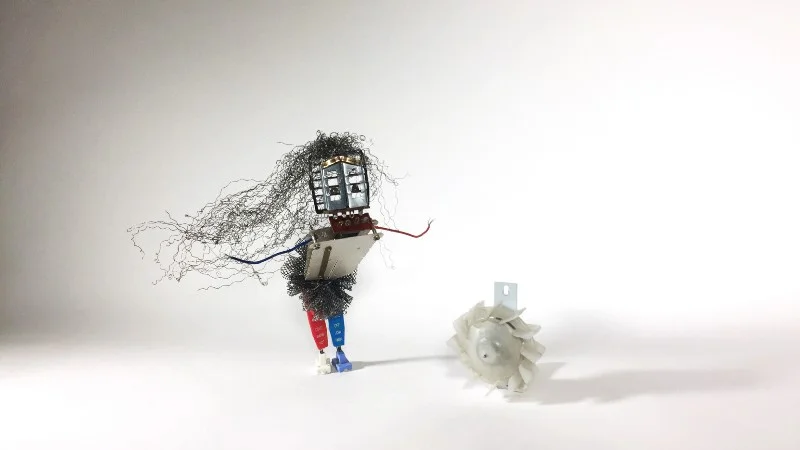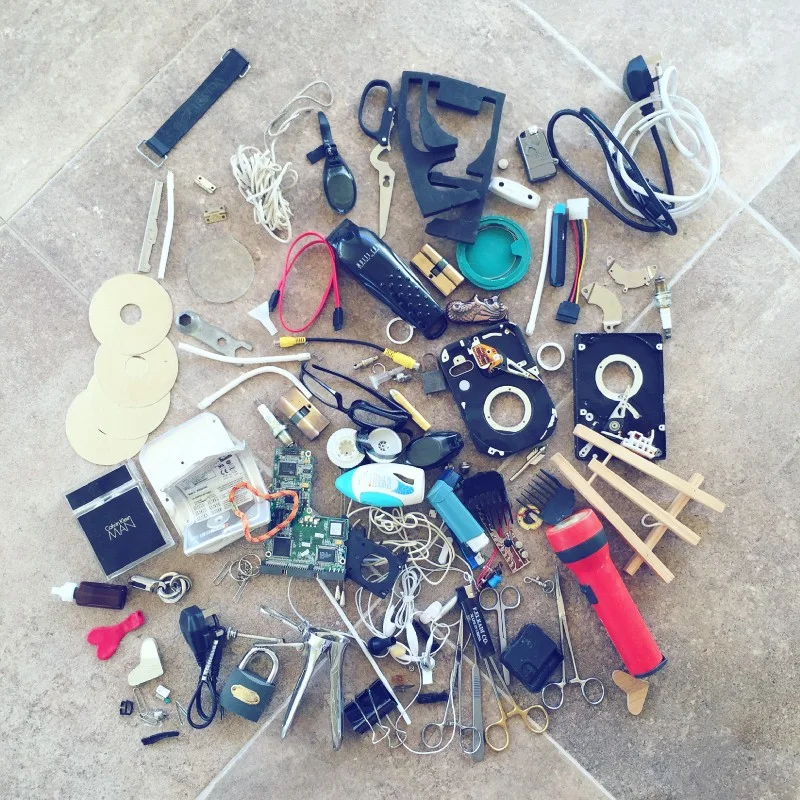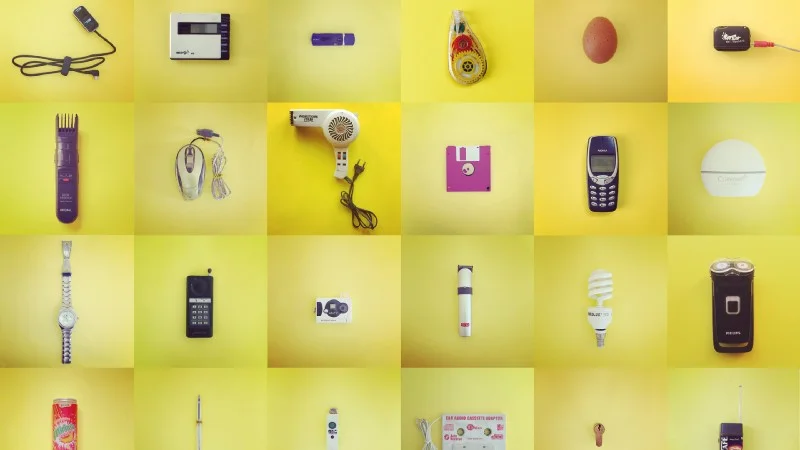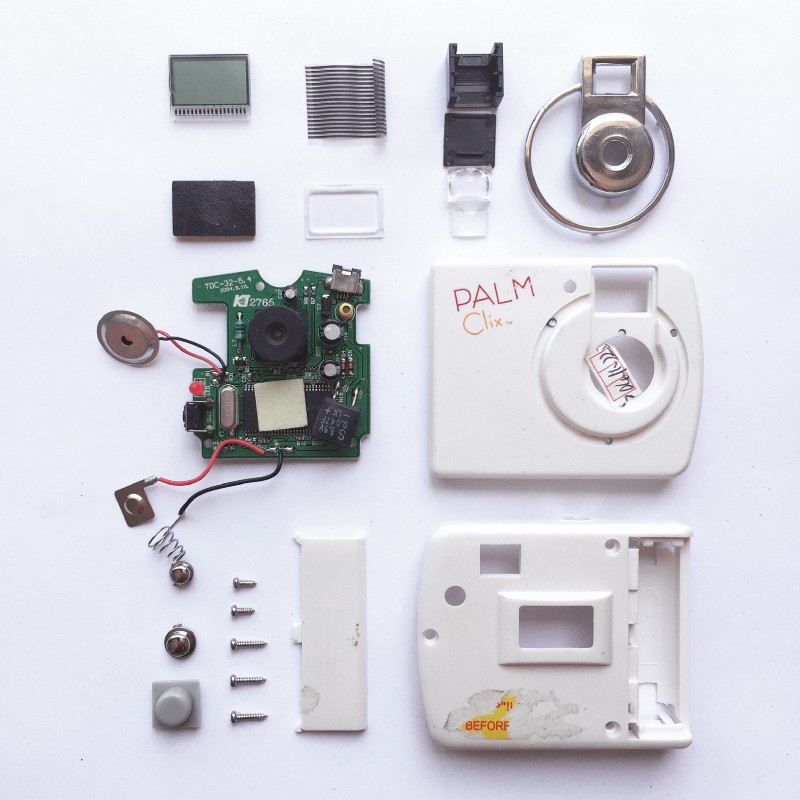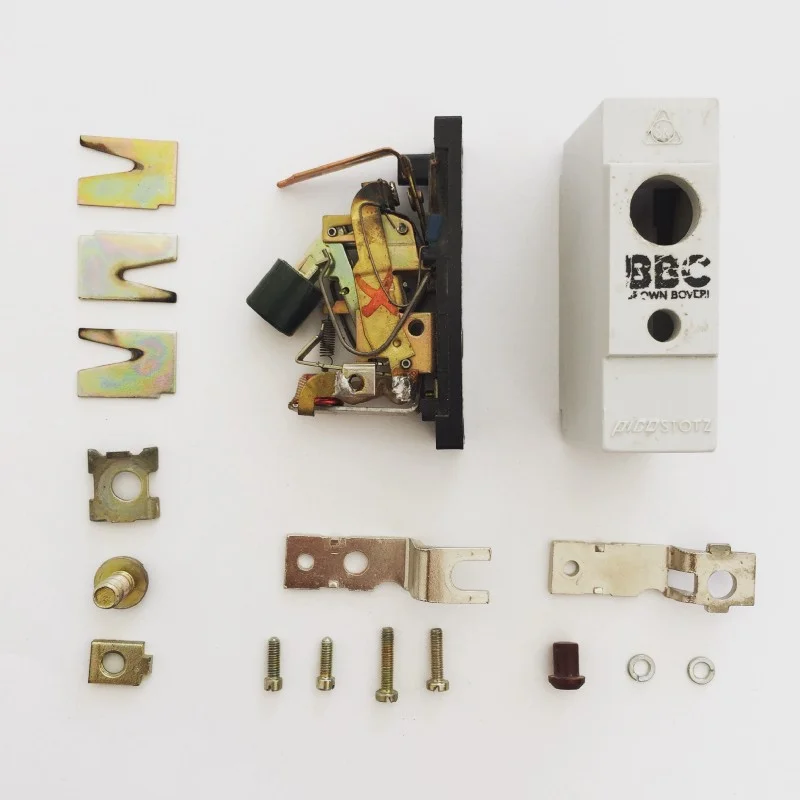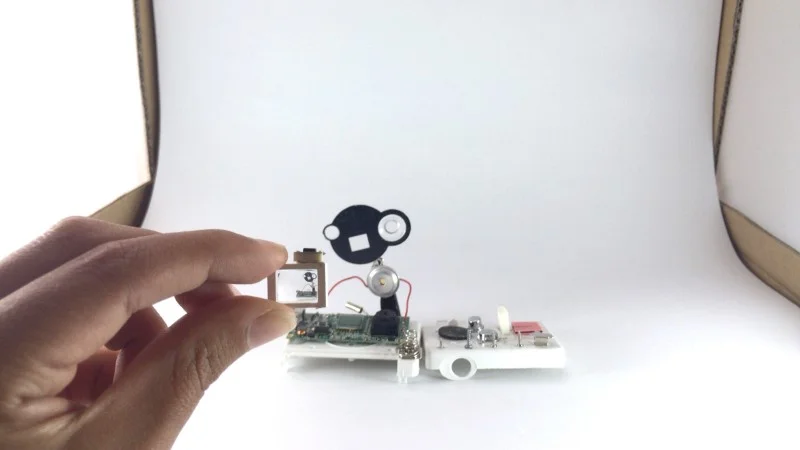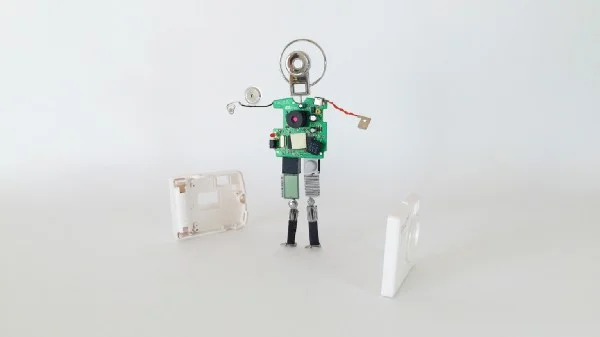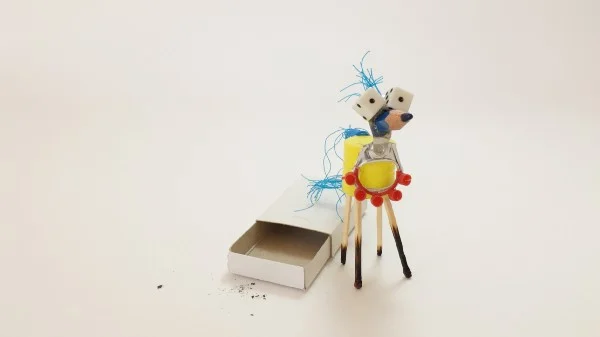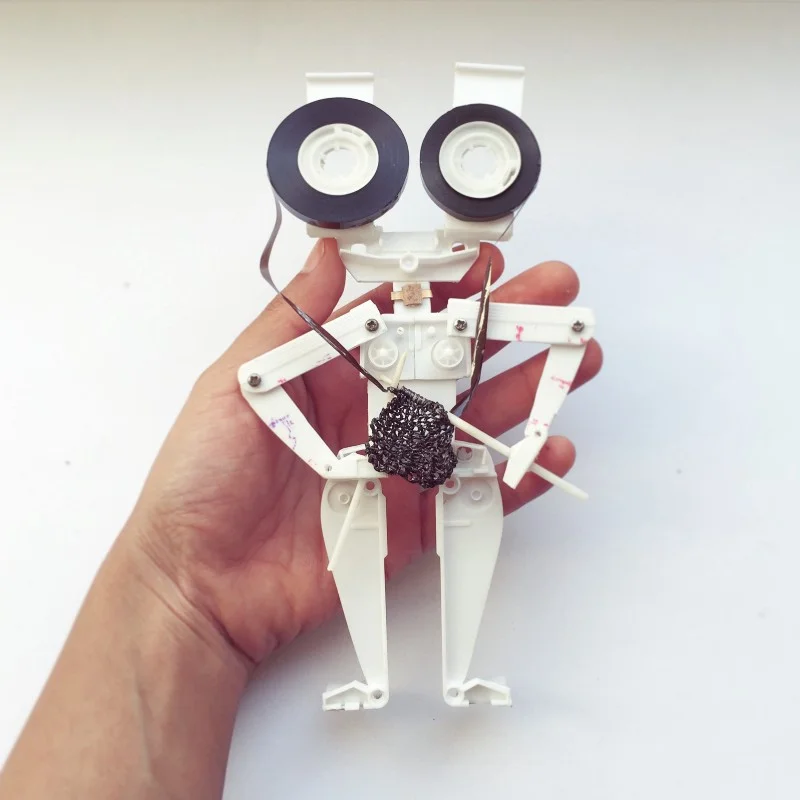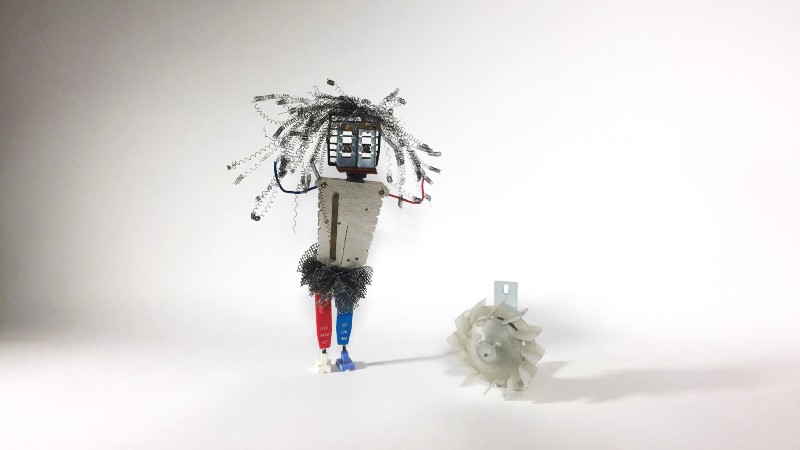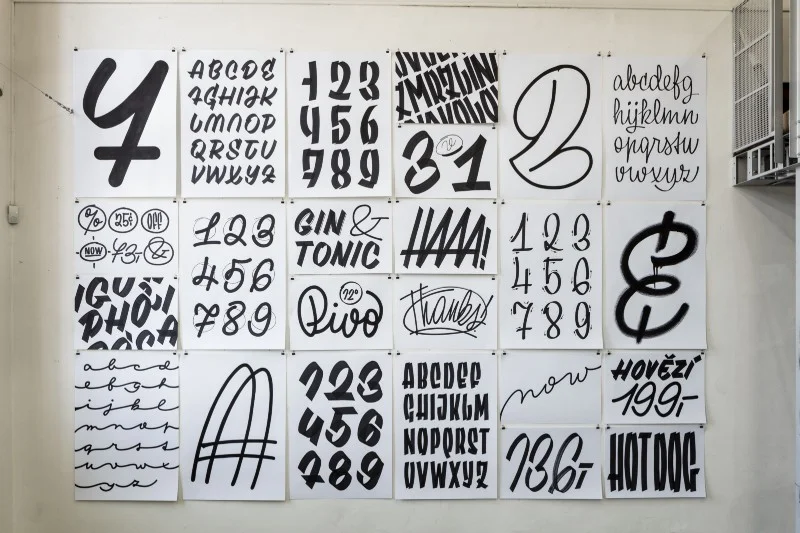‘Your Ideas, Your Brain & Your Hands Make You Creative’
TYPO Berlin: An Interview with Egyptian Product Designer dina Amin*
Dina Amin is a lot of things. She is a product designer, a tinker and a stop-motion artist among others. She showcases her creativity and talent by making and publishing stop-motion videos. Her project is called Tinker Friday, and her aim is to give broken objects another chance. This is her way of saying ‘we’re consuming so much’. In her workshop in Cairo, she disassembles a great variety of products, such as dryers, dolls, mobile pouches, to see what is inside them, turns them into characters, and then tells a story of them in a video. I talked to dina at TYPO Berlin back in May 2018.
dina Amin
Before talking about your projects, I would like to ask you about you and your studies just to get to know you better. You’re from Egypt, but you did your bachelor’s degree in Malaysia. Why did you go there to pursue your studies?
I studied in Egypt for two years in a design school but I didn’t really like it. Besides that, I always wondered how it was in another part of the world, outside Egypt. So I browsed some universities online and applied to several ones. I liked Asia. I felt they were so much different from us and I wanted to go and see how people lived there. Eventually, I spent four years there studying industrial design.
Have you ever worked with industrial design?
I worked as a product designer in a design studio for a few years in Egypt, but I found myself being interested in so many other things, so I tried other jobs as well. I worked as a graphic designer, a social media manager, did a bit of marketing and wrote for magazines. I did so many other things!! When I look back at those jobs now, I can say that I learnt something from all of them. As a designer, you need to market yourself, do a bit of writing, work with social media, etc. All of my projects are on Instagram, for example.
You do so many creative and interesting things when working. What are your hobbies?
I do lots of things. For example, I like seeing new things that I have never seen before. I also like learning about different cultures, languages and words. Even though my memory is not the best, I try to learn and remember the same word in different languages as well as the origin of them, and why people use that particular word.
Let’s move on to your projects now! There are probably several ways to document projects like yours. Why did you choose the technique of stop-motion?
It did not start with stop-motion. Something I started was to take objects apart, as I was curious to see what was inside them. First, I only took still images, and then one week I decided to show how all came together, and I remembered this thing called stop-motion. I thought I could actually use it to present how the parts are reassembled magically.
I did not imagine myself opening a program and making stop-motion videos; I did not know anything about video-making or animation, to be honest. When I started, I made extremely long video animations that I could not post online because of their length. I simply lacked the knowledge of time frames. Step by step, I learnt more and more about stop-motion, and I became intrigued by it. I love this particular technique because you’re basically making an illusion. You’re kind of deceiving people with things that are not real, and you’re also able to realise all kinds of ideas by using stop-motion. I love stop-motion!
Watching your videos, I could not help but notice the music you use. Those always suit perfectly the visual content. How do you pick the different musical pieces?
I spend hours and hours and hours looking for the perfect track. I wish I had the ability to imagine and make my own music but I really can’t. I appreciate everyone who has this talent. So what I do is to imagine how the rhythm would go and I keep searching for something that has the same pattern of sounds.
Where are you searching for music?
There are some great websites on the Internet one can turn to. I either buy the licence on sites like BeatPick or download something published under Creative Commons. I like BeatPick because of its unique and quirky tracks. On Creative Commons, many of my favourite pieces are composed by Kevin MacLeod.
Do you already have the rhythm in your head while making the video or only after the editing is done?
Sometimes I already like a song that would match one of my animations, but most of the time I look for tracks after the editing is done.
What kind of software do you use to edit your videos?
I started with an app called Stop Motion Studio, which you can just download on to your phone and edit the videos. Now I make my videos with Dragonframe, which is a piece of software used by professional animators as well. One can also edit their videos with Adobe Premiere Pro.
How much time do you usually need to finish a video, from the idea to the end product?
It depends. When I started, I really didn’t know what I was getting into, so every Friday I would pick a product and take it apart. I didn’t consider the principles of animation, the lighting, the sound, etc., I just realised my ideas. The more professional I became, the more time I needed to finish a video. My latest one took me a month and a half to make. Nowadays a lot of planning comes before the shooting. I think about every single frame I do: What is the goal? How will it look like? As a result, I know all the 700 photos I’m about to take, how those will look like, where the camera should be, where the lights should come from, etc.
What kind of challenges do you usually face?
When I have an object, I have to take it apart first and then put it back together. So I have to remember how the parts come together. Sometimes this is not possible so I animate along the way, thinking about how I can turn the object into a character. It takes a while but I always get an idea in the end.
Which project of yours are you the proudest of?
I’m proud of my doll head animation. Well, not so proud, though, as there is always room for improvement. I love and am proud of the one with the mobile pouch as well because it was challenging not to see the parts but still animate them.
There are many short film festivals in the world. Have you ever sent your films to those?
No, I haven’t tried to enter that world yet. Whenever I make a film, I always think that the next one will be the one, the best one ever. Of course, this has occurred to me several times by now. Maybe one day I’ll be able to say ‘this is it’.
You launched a Patreon page last year. What’s the reason behind that?
I started it because I was receiving a lot of commercial work, which I don’t really like. Beyond that, I wanted to find another way to support myself to do my other work that doesn’t really pay. It’s very limiting to work for companies because I don’t have as much freedom as when I do my own work. Sometimes I even get approached by companies whose products I don’t like or use. What is more, sometimes those are ephemeral. People buy them and throw them away pretty soon, which contradicts what I’m trying to do.
How does it go?
I didn’t even imagine that anyone would support me there, as I don’t have such a big audience that others might have. But it helps me. Some people would probably think it’s little, but I’d earn that kind of money as a part-time employee at a small company in Egypt, for example.
That’s great! During your talk, you briefly touched upon some comments you usually receive — comments that are somewhat negative. How do you deal with those?
Well, they are not really negative, as I know they are meant well, but people use these terms… For example, they always point out that I come from a third-world country. To be honest, it’s surprising to me that there are still people who are using this term in today’s world. They maybe don’t intend to use it in a bad way but they do strengthen certain stereotypes of people coming from the developing world.
How do I deal with them? I don’t really respond to them, but I do think about them. It doesn’t bother me if someone in the developed world thinks he/she is automatically more creative than someone from the developing world. But it would make me sad if someone from the developing world believed that he/she is not as creative, smart or successful and don’t have the same resources as those in the developed world have due to his or her country of origin. This is simply not true! This is what I aim at showing with my projects as well. You don’t necessarily need all those tools, because not those, but your ideas, your brain and your hands make you creative. So I try to deal with them in that way.
Do you think you would be perceived differently if you were from another country than Egypt?
Definitely!
What do you think the origin of these comments is?
People say this is how they see us on TV. You see all the negative news, and there is only one image of Arabs, Middle Eastern or Egyptians in the media. I don’t think we should make the same mistakes on the Internet. We should work on making the world open and not closed by reproducing the images we receive from broadcast media. We have so many talented people in Egypt, in the Arab world, in the Middle East. There are talented people everywhere. Therefore, it’s so cool when magazines cover different parts of the world and they don’t only focus on one part of it. This is also important.
What about your followers? Are they mainly from Egypt or more international?
They are very international, but many of them are from Egypt, which I’m happy about now. What I do is weird or unusual in Egypt. In my country, your life has a timeline you need to follow. You graduate from high school, go to college, even though you have no idea what you’re doing or want to do. You study something you don’t like, graduate, and then work on something you’re not fond of either. And later, at around 50, you figure out what you want to do.
It might be similar to other parts of the world that it’s better to become a doctor, engineer rather than work with the arts. No idea where my work, including taking objects apart and animating them, fits into this hierarchical system. It definitely does not belong to the top ones. However, now when I’m becoming more professional about stop-motion and realising more larger projects, people in Egypt can see that this is also a path that could lead to something. They might get inspired to stick to their ideas and make a career out of them.
Do you also organise workshops?
I’ve led a few. I held a workshop at an agency in Düsseldorf last week. I also organised a few events where I invited people, both adults and kids, to come and take apart some broken products I got from the scrap market and see what’s inside them. At one of the events, I could see boys hold a doll in Egypt for the first time!!
Do you also go to flea markets to buy some stuff when visiting cities in different countries?
I check them out but I’ve already got a lot of stuff in Egypt. In addition to that, it’s always risky to go through security checks with those items. I did this before, and the security guards asked lots of questions.
In your talk, you talked about that you learnt how to do woodwork. I’m wondering what else you’d like to learn. Is there anything new on your list?
I want to learn more about mechanical toys, and also about electronics because I don’t know so much about hardware.
You also mentioned that you don’t really have plans. But is there an object you haven’t taken apart yet but would really love to?
As I usually work with smaller objects, I wish one day I could actually disassemble a bigger thing, maybe a refrigerator or a car. I like things that have more mechanical parts because it’s interesting to see how those parts are connected.
*The letter d is not capitalised, as dina does not like the shape of it.
